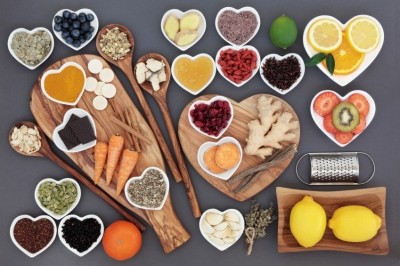exclusive guest article
The state of the health and wellness market in 2015

Naturally healthy wins out
Perceived healthier than highly refined foods, the naturally healthy category - valued globally at €251bn in 2015 - is the real winner in health and wellness 2015.
It is the largest health and wellness category, exceeding fortified/functional products by almost €16bn in retail value and beating it in terms of growth dynamism, according to Euromonitor's Health and Wellness Global Performance 2015 data.
Naturally healthy products like oatmeal, spring water, 100% juice and nut snacks are among the ultimate clean label foods, which in the eyes of consumers have not been toyed with and can therefore be trusted even if they do not sport an organic label.
Naturally healthy is also a prime area for innovation, with new 'superfoods' and beverages continuously hitting retailer shelves. Further growth of over €63bn at constant 2015 prices is expected by 2020.
Fortified/functional food as relevant as ever
Despite what some might expect, owing to the concerted drive towards clean labels and natural products, fortified/functional offerings are doing much more than just holding their ground. They are showing healthy growth, in fact.
Extra protein and energy are in particular demand. Euromonitor International’s latest data identifies energy boosting as the most dynamic health and wellness positioning, with constant value growth of 8% in 2015.
Formerly targetting mainly young males, manufacturers have been working hard to broaden their audiences by launching products that are more appealing and relevant to women and mature consumers, for example. After all, the desire for a timely energy boost is a universal one.
Probiotic yoghurt is also going from strength to strength.
Although growth rates in Western Europe and the US are not as dynamic as a decade ago, on a global level probiotics are still driving yoghurt growth. The world’s top five growth markets in terms of value in 2015 are India, China, Venezuela, Saudi Arabia and Norway.
In China, for example, probiotic yoghurt registered an impressive 31% value increase in 2015.
Owing to enthusiastic promotion of diverse health benefits such as life span extension as well attractive packaging, Chinese consumers are drawn to purchasing probiotic yoghurt as gifts for friends or relatives.
One factor that may potentially constrain probiotic yoghurt growth in the country is that Chinese consumers tend to avoid chilled products for breakfast, believing they have a negative impact on digestion when consumed early in the day.
Over the forecast period, China is also the country where fortified/functional offerings are predicted to make the most gains, with a constant 2015 CAGR of 12%.
All the countries but Hong Kong with a forecast CAGR above 3.5% are emerging economies.
Indulgence & convenience drive gluten-free
Food intolerance positioning was almost on par with that of energy boosting in value growth in 2015, at nearly 8%.
Gluten-free is taking the world by storm, with gluten-free foods established as differentiated food offerings in modern grocery retailers.
Value sales of bread and pasta are falling globally, while gluten-free versions are making impressive gains.
Gluten-free bread alone is valued at €924m globally this year. Gluten-free food may have been less dynamic in 2015 compared to previous years within the review period, but it nevertheless managed to garner a 9.6% constant value rise.
Gluten-free cakes led the pack with a 14% value gain, demonstrating just how strongly consumers hanker for a bit of indulgence when they are on an exclusion diet.
Convenience is another major driver. Gluten-free ready meals – a category in our data for the first time this year – grew from €260m to €369m globally between 2010 and 2015.
It is not just rice-based Asian-style dishes, which are ever more frequently promoted as gluten-free options, but re-hashed traditional 'gluten-bomb' comfort foods as well.
In July 2015, for example, Canadian manufacturer Daiya introduced its mac and cheese offering Cheezy Mac, which besides being gluten free was also devoid of dairy and soya.
Organic still delivering growth
It might come as a surprise to some to hear just how well organic is doing. With 4.5% value growth in 2015, it outperformed overall health and wellness food and beverages’ value growth by 2%, reaching €31.4bn globally.
Western Europe delivered a steady 4% increase, which was in line with the review period performance, as was North America’s 3% rise.
Within organic packaged food in Western Europe, a constant CAGR of 11% over 2010-2015 in Italy showed the second highest growth rate after Turkey.
The global top ten leader board is replete with emerging economies, though, including China, Argentina, Turkey, Morocco, Colombia, India and Romania.
Organic is very much in sync with the natural and clean label trend, and so unlikely to fall out of favour with consumers in the foreseeable future.
BFY: A victim of clean label & reformulation trends
The better for you (BFY) category, which comprises food and beverages reduced in sugar, fat, salt and/or carbohydrates, suffered over the review period and 2015 brought yet another 1% drop in global value sales.
The reasons for BFY’s malaise are two-fold. For one, the clean label trend is flexing its muscles. When fat, sugar, salt and carbohydrates are removed from a food and/or beverage, some kind of substitution is usually required. These stand-ins can sound 'chemical', which puts consumers off.
The other main reason is the food industry’s ongoing reformulation efforts to make product portfolios healthier, rather than developing and promoting BFY brand extensions.
This tandem of factors helps to explain the apparent paradox of why reduced sugar breakfast cereals contracted by 19% in value in 2015.
This was also a year when sugar came under heavy fire once more after the World Health Organisation (WHO) issued a new guideline in March stating adults and children ought to reduce their intake of free sugars to no more than 10% of total energy intake and ideally less than 5% (six teaspoons).
Over the review period, global value sales of reduced sugar breakfast cereals halved from €164.5m in 2010 to €85.8m in 2015.
Among the biggest losers are reduced sugar versions of Kellogg’s Frosties and Kellogg’s Fruit Loops, registering 60% and 92% drops in global value sales, respectively, between 2010 and 2015.
This illustrates that consumers are more inclined to switch to a different breakfast offering altogether than stand by an 'adulterated' version of an 'unhealthy' product.
Over the coming weeks, Euromonitor will drill down more deeply into its newly published data to uncover category-, regional-, and country-specific trends.
























